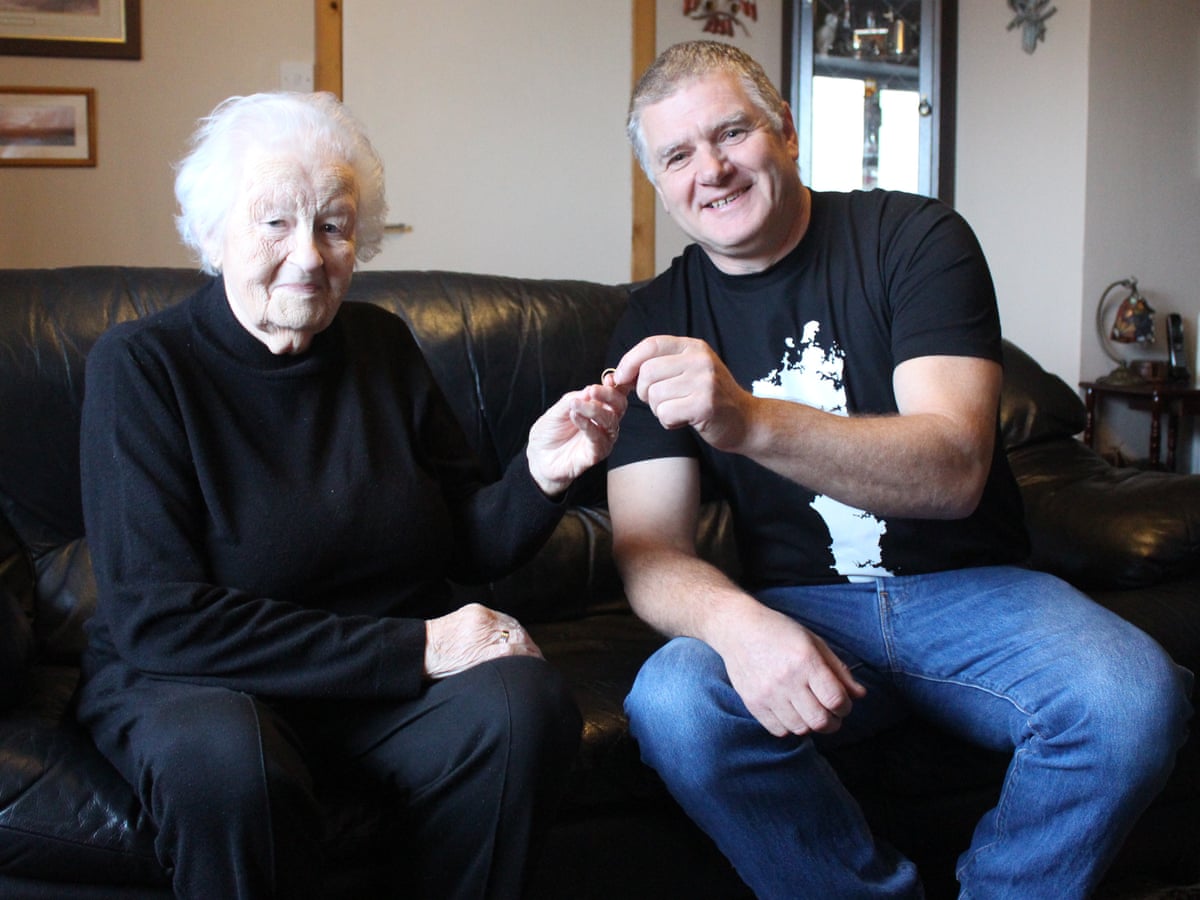Scottish woman reunited with wedding ring she lost in potato patch 50 years ago
“It was a wee bit emotional,” says Donald MacPhee, reflecting on how he reunited a woman with the wedding ring she lost in a potato patch in the Western Isles 50 years ago. Peggy MacSween, now 86, believed she had lost the golden ring forever and had given up ever seeing it again after it slipped off her finger while she gathered potatoes at her home town.
She said of losing it: “I was shaking the sand out of my gloves and the ring disappeared. I didn’t know until I got home. I went out to the field once or twice to look for it, but there was no way of finding it.”
Her husband, John, whom she married in July 1958 and died a few years ago, bought her a replacement while they were on holiday.
But after learning about the lost ring during a neighbourly chat, fellow islander and single-minded metal detectorist MacPhee made it his mission to unearth the treasure.
He spent three days searching the sandy coastal meadow where the potato patch once was with a metal detector. The area had become a popular drinking spot over the years, resulting in a significant number of thrown away and buried can ring pulls that confused the sonic search with the detector for the ring.
MacPhee, who runs Benbecula’s Nunton House hostel, explained: “For three days I searched and dug 90 holes. The trouble is gold rings make the same sound on the detector as ring pulls and I got a lot of those – as well as many other things such as horseshoes and cans. But on the third day, I found the ring. I was absolutely flabbergasted. I had searched an area of 5,000 square metres. It was a one in a 100,000 chance and certainly my best find. It was a fluke. There was technique involved, but I just got lucky.”
After dislodging it from the turf, MacPhee brought the ring straight to its owner. “I was surprised to see that it was in immaculate condition and that it still fit perfectly when she put it on her finger.”
Taking up the story, MacSween said: “He just came to the door and said: ‘I have something to show you.’ It was the ring. I couldn’t believe it, but there it was. I thought I would never see it again.”
MacPhee said he had started metal detecting seven years ago after watching YouTube videos. “That got me interested and this is for many reasons my best find,” he said.
MacSween said she plans to wear the ring alongside the replacement her husband, John, bought her after the original was lost. She said the ring is a reminder of her husband.
source: theguardian.com
- Pontosan hogyan, milyen körülmények között vesztette el a gyűrűjét Peggy MacSween?
- Hogyan és milyen elhatározásra jutott ezzel kapcsolatban Donald MacPhee?
- Milyen erőfeszítéseket tett célja elérése érdekében?
- Mi nehezítette az erőfeszítéseit?
- Minek tulajdonítja a sikerét?
- Mi lepte meg a férfit?
- Hogyan reagált Peggy MacSween, amikor a férfi megjelent a gyűrűvel?
- Mit tervez a hölgy a gyűrűvel kapcsolatban?
Scottish woman reunited with wedding ring she lost in potato patch 50 years ago
- Krumplit szedett és lecsúszott az ujjáról. Ahogy rázta ki a homokot a kesztyűjéből, eltűnt. Otthon vette csak észre. Kiment a földre keresni egy-kétszer, de nem találta.
2. Hallott az esetről egy baráti/szomszédi beszélgetés során és céljául tűzte ki, hogy előássa a kincset/a gyűrűt a fémdetektorával.
3. Három napig kereste a detektorral és 90 lyukat ásott.
4. A területre sokan járnak inni, és a rengeteg eldobott és betemetett fémdoboz nyitó gyűrű zavarta a keresést, mert a detektor ugyanolyan hangot ad rá, mint az aranygyűrűre.
5. Annak, hogy óriási szerencséje volt. Nem sok esélye volt megtalálni a gyűrűt.
6. Az, hogy a gyűrű kifogástalan állapotban volt, és tökéletesen passzolt a hölgy ujjára.
7. Alig tudta elhinni, mert azt hitte már sosem kerül elő.
8. Együtt fogja viselni a másikkal, amit a férje vett neki, miután ezt elvesztette.





